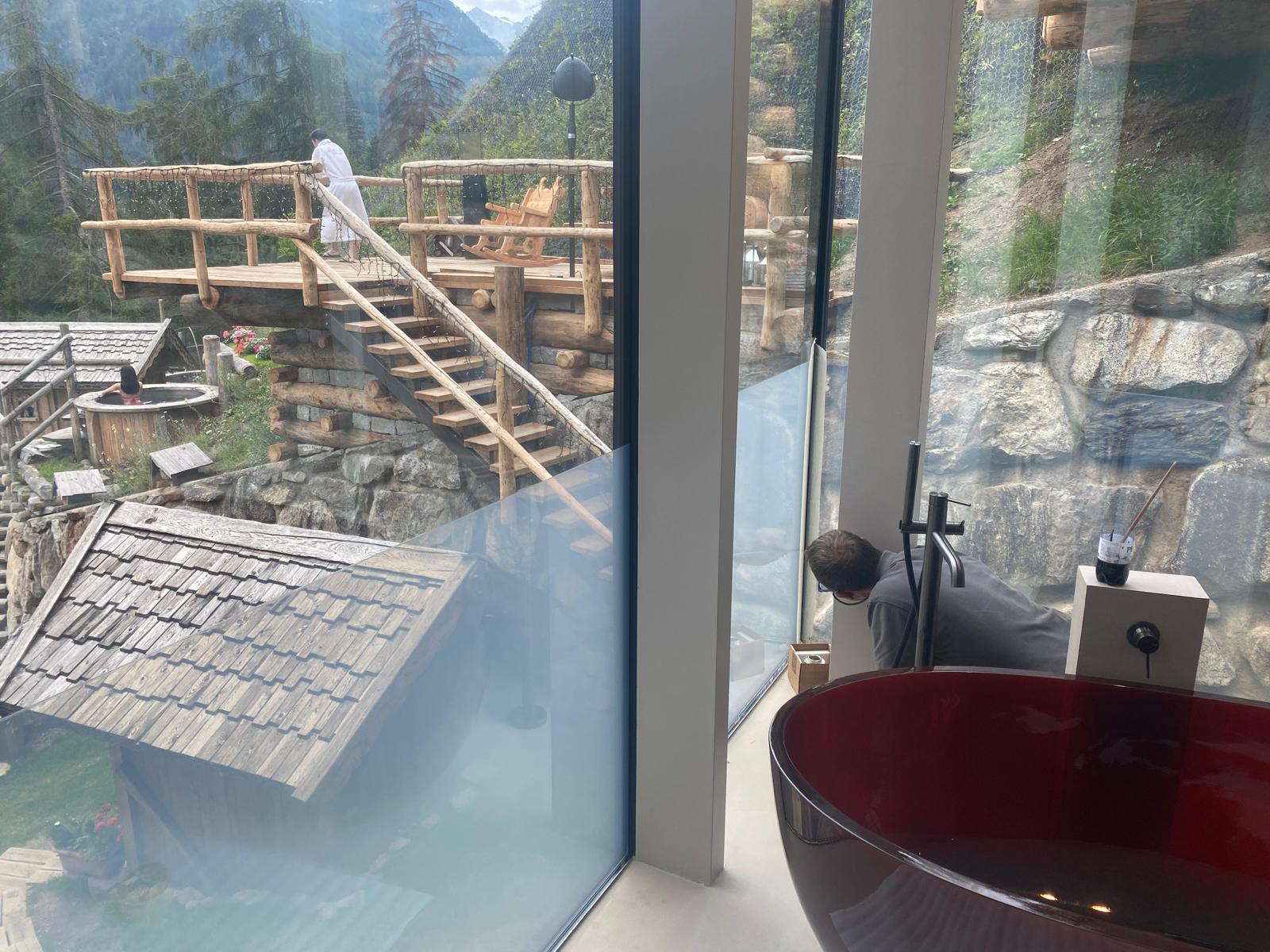They are suitable for glass partitions in offices or homes, as well as shop windows. The liquid crystals within the LCD Switch film allow privacy or visibility of glass surfaces to be adjusted in just one millisecond. In the “OFF” position, they become a bright and clear HD screen for rear projections using simple and cost-effective projectors.
Pellicole LCD Switch elettro-ottiche
Create your privacy with a “click” and project images onto glass surfaces using Electro-optical LCD Switch Films.
What are electro-optical LCD Switch films?
These are innovative, adhesive, electrically controlled dimming films that can be switched on and off via an electric switch or an IR remote control.
What are the advantages of electro-optical LCD Switch films for glass?
Immediate
privacy control
LCD Switch films can shift from transparent to opaque with a simple electric command, allowing you to adjust the level of privacy at any time. This makes them ideal for offices, meeting rooms, home or shop windows, ensuring privacy without the need for curtains or blinds.
Energy efficiency
and thermal comfort
Electro-optical films help reduce heat build-up from direct sunlight, improving indoor comfort and reducing energy consumption related to air conditioning. The control of transparency also allows for a more efficient management of natural lighting.
Versatility
of use
These films can be applied to various glass surfaces, from windows to partitions, adapting to a range of environments such as homes, offices, hospitals, or commercial spaces. Moreover, they are available in different configurations to meet specific aesthetic and functional needs.
Sustainability
and durability
Electro-optical films are designed to last long, offering a sustainable solution for managing light and privacy. In addition, as a low-energy consumption technology, they represent an eco-friendly alternative to traditional shading systems.


This innovative product is an exciting addition to the solar film market. The LCD Switch film is an electric film installed on existing glass surfaces. Using the LPF system (Liquid Crystal Electrooptical Film), it allows light to be filtered from a maximum value to zero, enabling the film’s ON/OFF effect. In the “ON” state, the film is electrically activated, becoming transparent, while in the “OFF” state, it becomes opaque, ensuring maximum privacy for the glass surface.































